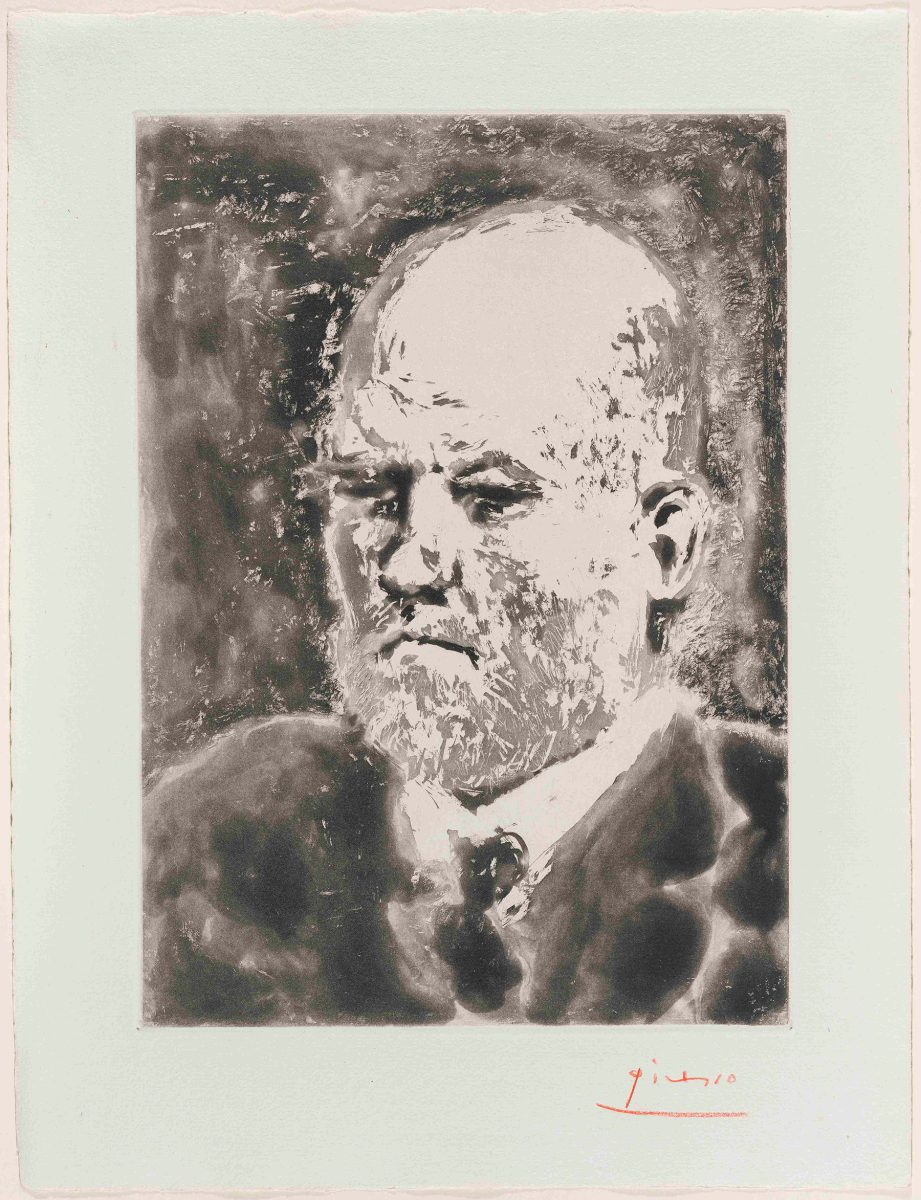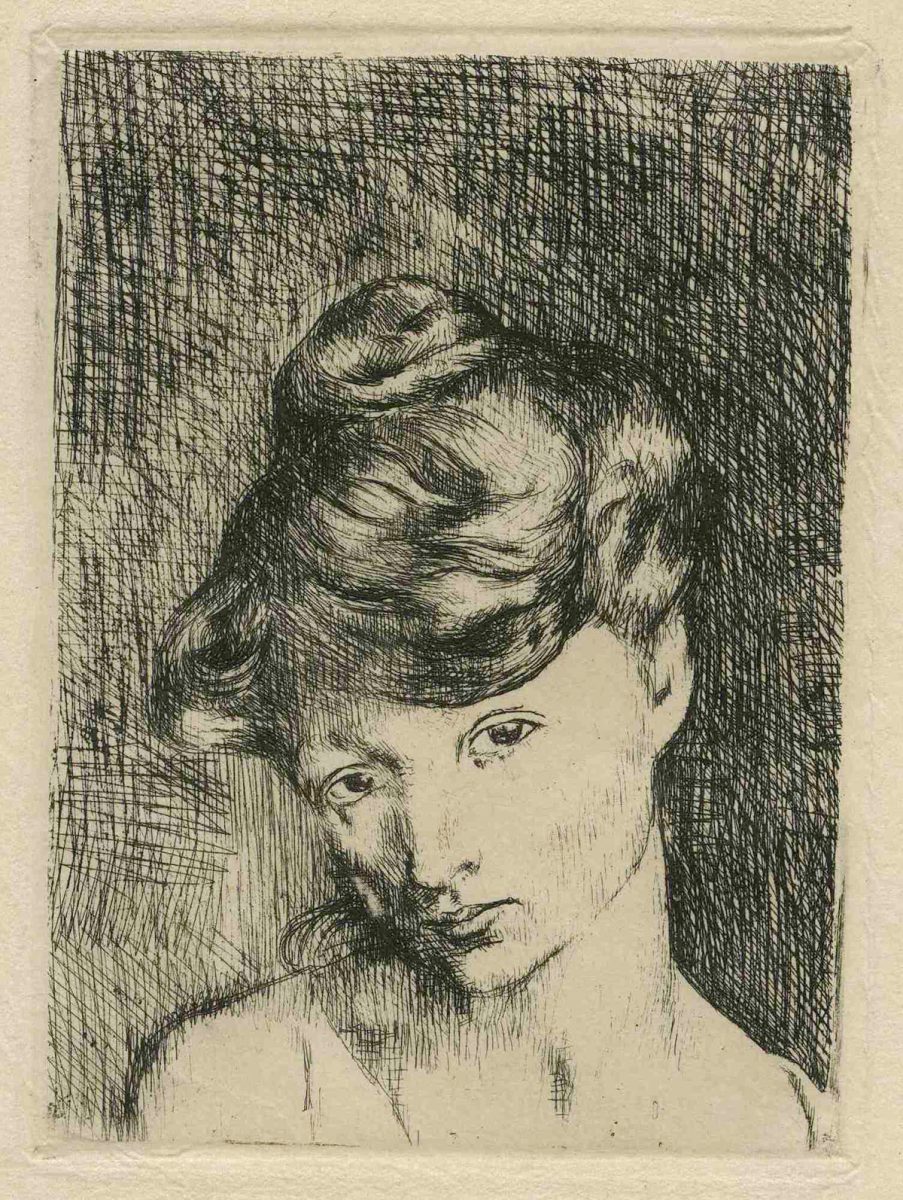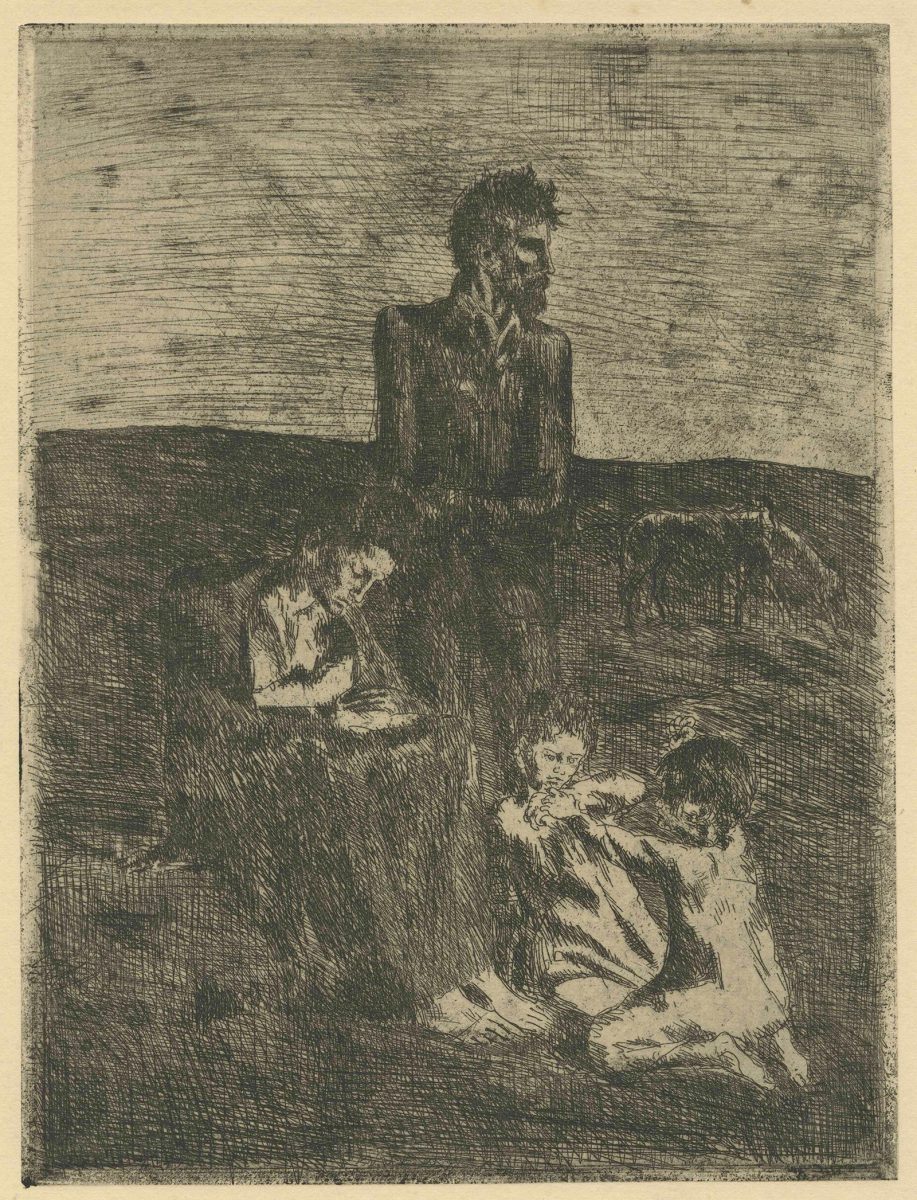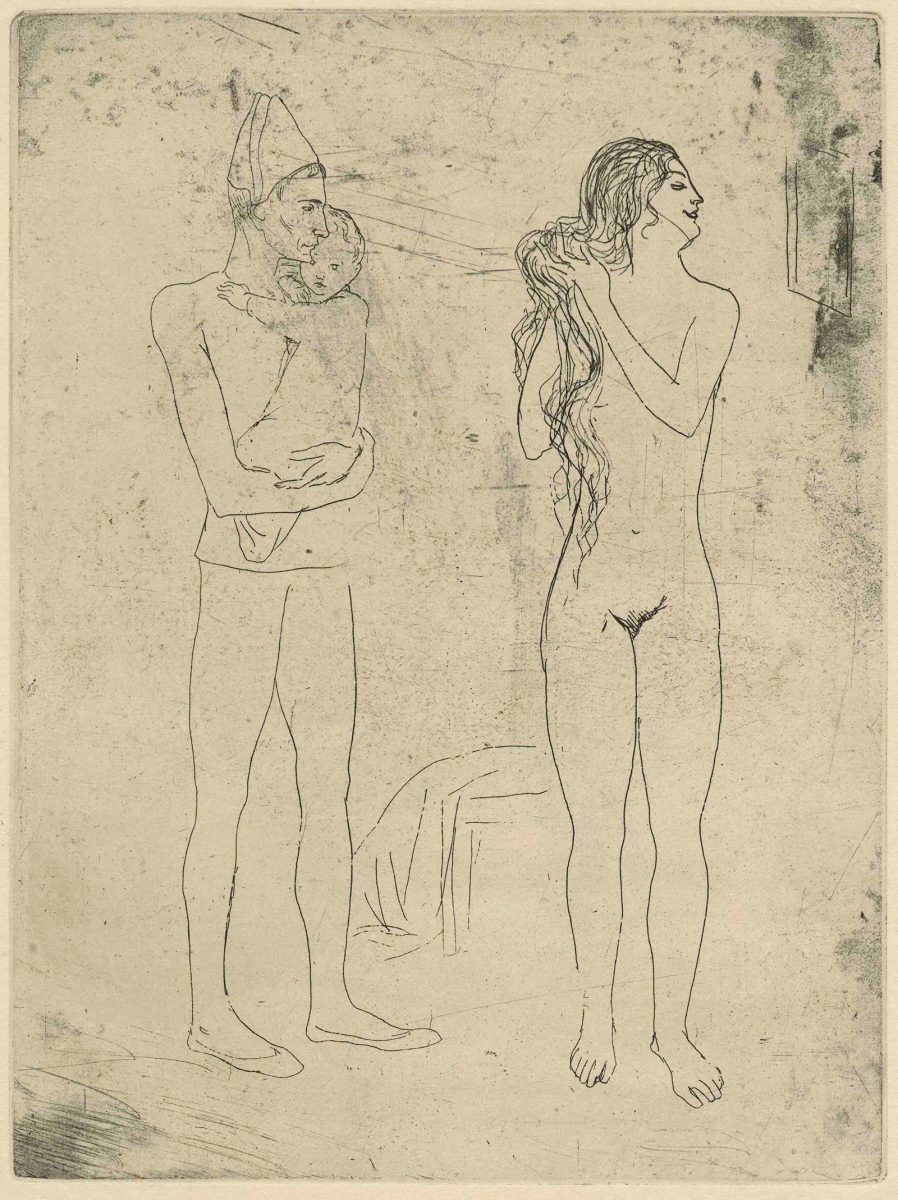Pablo Picasso, a legendary figure of the 20th century, was not only a painter but also a draughtsman, sculptor, ceramist and printmaker. Indeed, his influence extended deeply into the history of engraving, a medium he approached with his characteristic passion and devilish skill, utilizing every technique available to him.
Born in Málaga in 1881, Picasso displayed an exceptional talent from a young age, initially studying with his father, a painting teacher, and later at the Barcelona School of Fine Arts. In 1900, the young artist traveled from Spain to Paris for the first time, a city he would frequently visit until 1904, when he settled in Montmartre’s Bateau-Lavoir artists' community. These early years in Paris marked the beginning of his renowned “Blue Period” (1901–1904), which featured works with somber atmosphere and subjects taken from the lives of the impoverished. This was followed by his “Pink Period” (1904-1906), characterised by warmer hues and images of acrobats and other performers. During this time, Picasso also created his first significant prints, some of which were later compiled by the art dealer Ambroise Vollard in the Saltimbanques series (1913). His work The Frugal Meal (1904)—the most celebrated plate in that series—depicts a destitute couple sharing a meagre meal and showcased Picasso’s profound expressiveness at just twenty-three years old.
A pivotal moment in Picasso's artistic development came in 1907 with Les Demoiselles d'Avignon, a groundbreaking painting that challenged traditional systems of representation and set the stage for his development of Cubism alongside Georges Braque. During the inter-war years, Picasso returned to a more classical aesthetic, a shift that is also visible in his prints of the time. In 1937, Ambroise Vollard published what’s now called the Vollard Suite (1930-1937), a renowned collection of one hundred prints, in which Picasso covers various themes, including the Minotaur and the sculptor in his studio. The series concludes with three portraits of the famous dealer and publisher.
At the end of the 1930s, Picasso turned his attention to the tragedies and outrages of human history. Guernica (1937), one of his most iconic paintings, harrowingly depicts a violent bombing of civilians that occurred during the Spanish Civil War. After World War II, Picasso, now a world-famous artist, left Paris for the south of France, where his creativity showed no signs of waning, as evident in his fascinating variations on Velázquez's Las Meninas and Manet's Le Déjeuner sur l'herbe. Yet even in his final years, Picasso remained committed to engraving on stone, copper and linoleum. In 1968, at the age of eighty-seven, he began a major project with his printer Piero Crommelynck, producing a remarkable series of 347 engravings in just seven months. With more than 2,500 plates created over a span of seven decades, Picasso became recognized as the most prolific engraver of the 20th century, experimenting in all techniques with unparalleled freedom and inventiveness, resulting in some of the most exquisite prints of his era.
The collection of the Fondation William Cuendet & Atelier de Saint-Prex includes seven prints by Picasso. The first five, from the Saltimbanques Suite (1904-1913), came from the private collection of Gérard de Palézieux. Additionally, the Fondation recently acquired two other prints by the artist: Le Repas frugal (the first plate of the Saltimbanques Suite), and Portrait de Vollard, plate 99 of the Vollard Suite (1937).




